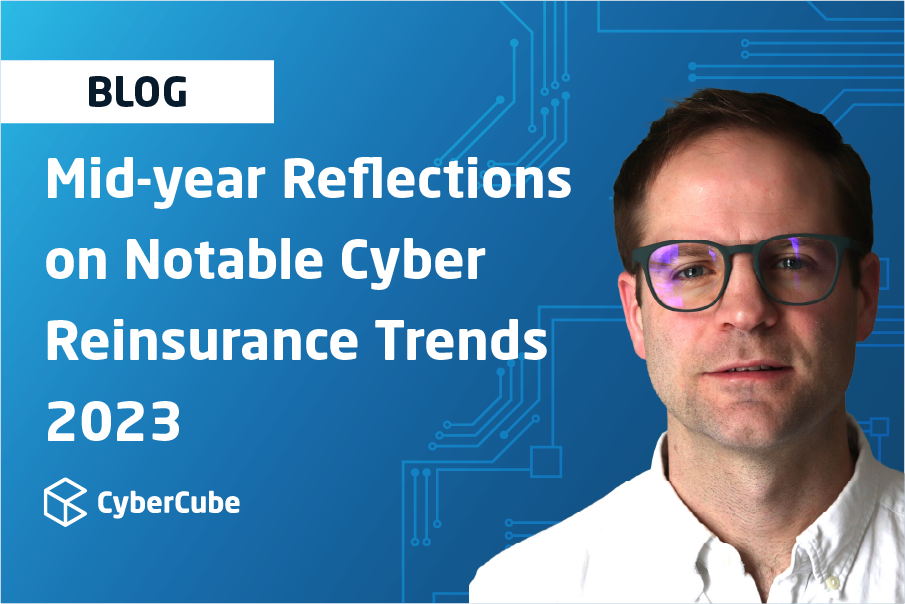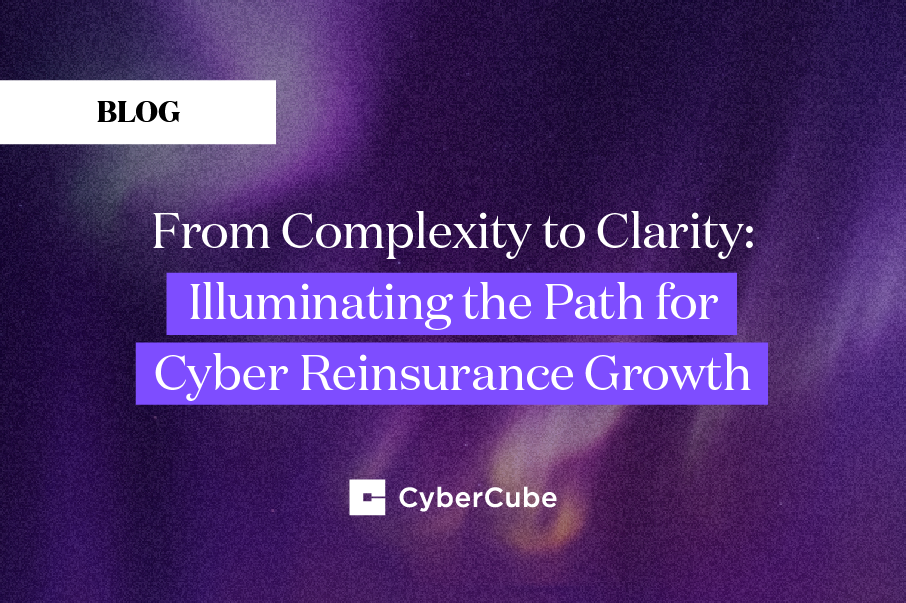One area of the cyber market that gets less attention in the industry press is reinsurance.
Notably, during the Jan 1 renewals, losses across other lines caught up to reinsurance pricing overall, resulting in significant reinsurance and retro price increases across the market. Due to this, sometimes cyber placements were involved in horse trading amongst other lines for a single cedent. This increased the complexity of placing programs by multiplying the number of stakeholders involved and obfuscated any true risk adjusted rate change in Cyber itself.
This meant that some poor performers were brushed under the rug and some good performers maybe didn’t get the credit they deserved. If things change, which seems to be the only constant in Cyber, these differences may be exposed. To quote Warren Buffett: “Only when the tide goes out do you learn who has been swimming naked.”
As a Client Account Manager at CyberCube, I work with clients across the insurance value chain and wanted to shed some light on current trends in the industry.
There is always a long lead time to adapt to new reinsurer requirements, and so looking forward also serves as notice of where the microscope may be focused come 1/1 renewals and beyond.
Trend 1: Developing Event Covers
Hot take: the Aggregate Stop Loss (ASL) contracts currently in the market don’t serve anyone well. The carriers are paying for contracts that attach too high and overpay for broad coverage. The reinsurers price for broad coverage and the capital drain it represents — because of this they are not forced to actually understand the risk in detail and be precise about contract clarity and capital allocation.
While ASL contracts are helpful for new entrants or emerging lines, cyber reinsurance is beyond this. If the primary market can develop widespread event language, then the reinsurance market can follow suit. The current focus on contract certainty is critical, and while the market might not get it right the first time, it needs to be done.
Earlier in the year we saw Beazley placing two tranches of a cat bond, the marketing and attention this drew is indicative of the demand for new solutions to risk transfer. It’s great that ILS investors are dipping their toes in but the bulk of capital will still need to come from traditional reinsurance players.
While occurrence contracts take more work to define and implement, I would encourage reinsurers to participate on deals led by the innovators in the space. This will help drive innovation and product development to help the market manage cat risk more effectively.
Trend 2: Cedant Differentiation
CyberCube has been working with sophisticated reinsurers and brokers to develop advanced tools for cedant differentiation. As the market grows and risk continues to be ceded to reinsurance, the exposure on reinsurance balance sheets becomes more material. With that, reinsurers are taking a more analytical and rigorous approach to be more selective about which risks they write and on what terms. Reinsurers are asking a number of questions of us and the market to bolster their underwriting for the upcoming year:
- What approaches can they take to differentiate between cedants?
- Do we take the carrier's word that they have superior risk selection or can we actually prove that?
- What is the best way to diversify our book?
These are some of my favorite conversations — combining different data sets to tell a complex story.
Trend 3: Data Quality
Another key area which is quickly becoming table stakes: data quality! This is a critical element in natural catastrophe reinsurance, and it is becoming increasingly important in cyber. Ultimately, if the cedant can’t capture granular data and report it in a timely manner, why should we trust their underwriting process?
One reinsurer I spoke to recently summed it up well: “If I have to make an assumption about your data, it’s going to be a conservative one.”
Detailed exposure data — including, for better or worse, broker ‘adjustments’ — is a core part of property cat and I think 2023 will be the year where cedants start to earn credit for delivering in this area. Every reinsurer I work with is sharpening their view regarding this, so be warned!
A tailored approach to cyber risk transfer
As the cyber reinsurance industry develops, it’s important for carriers, brokers and reinsurers to partner to develop more tailored and appropriate risk transfer tools and enable the market to continue to grow. While these ideas and approaches will take time to evolve there has been a step change this year in terms of how reinsurers specifically are addressing their analytics. It is important for carriers to be ahead of this to avoid being punished during renewals.
At CyberCube, we’re committed to better understanding cyber risk through ongoing research, product development and consulting projects in order to continuously deliver value to clients. It has been great to see significant engagement from reinsurance clients this year to help shape and develop their analytical strategy, and to get ahead of the curve in terms of cyber modeling and catastrophe risk management.
I hope you enjoyed reading this glimpse into Cyber Reinsurance — please email me at simons@cybcube.com if you want to discuss further! It’s definitely one of my favorite topics.




